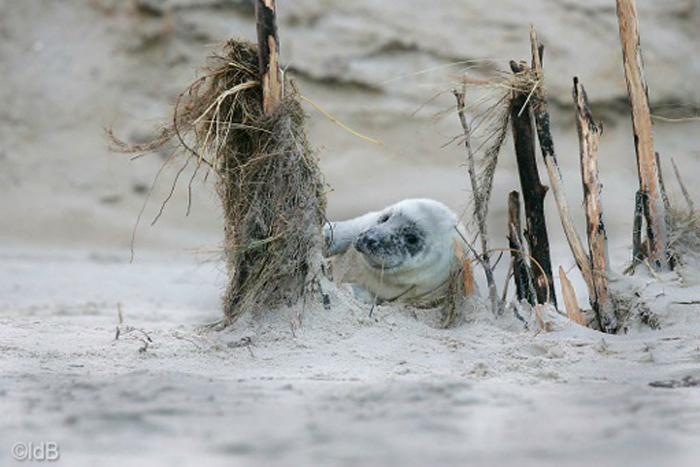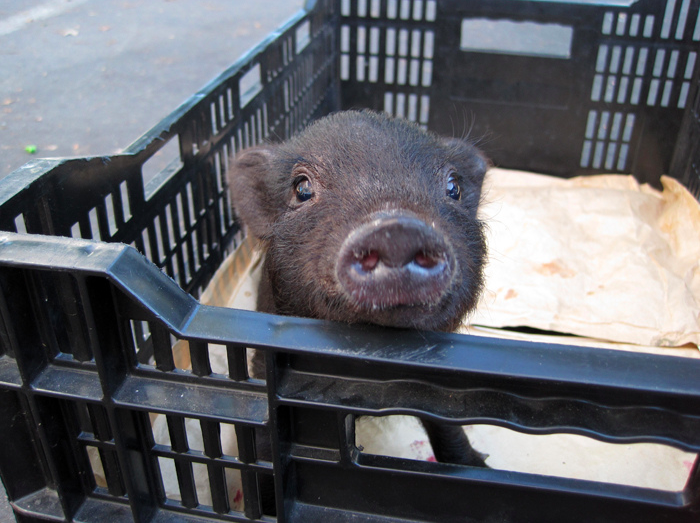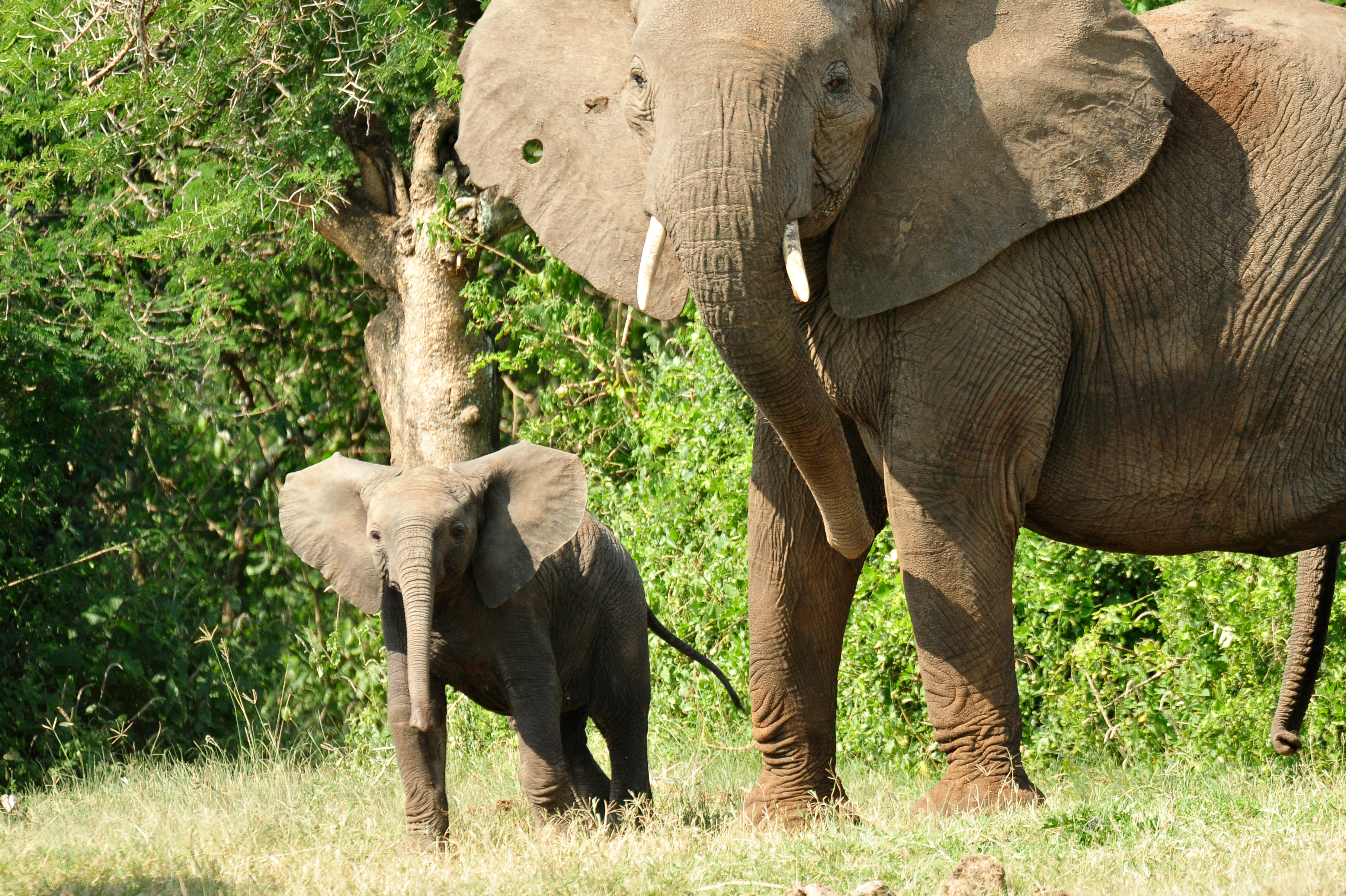Ignoring Nature No More: The State of the Animals 2013 (Op-Ed)


Marc Bekoff, emeritus professor at the University of Colorado, Boulder, is one of the world's pioneering cognitive ethologists, a Guggenheim Fellow, and co-founder with Jane Goodall of Ethologists for the Ethical Treatment of Animals. Bekoff's latest book is Why Dogs Hump and Bees Get Depressed (New World Library, 2013). This essay is adapted from one that appeared in Bekoff's column Animal Emotions in Psychology Today. He contributed this article to LiveScience's Expert Voices: Op-Ed & Insights.
Denise Herzing's recently gave a TED talk entitled "If We Could Talk To the Animals" about the clearly smart and emotional dolphins she and her team study. Her talk made me think of an incredible number of larger themes and "big" questions centering on the fascinating lives of the other animals with whom we share our magnificent planet. It also made me think about the rapidly growing cross-disciplinary field of anthrozoology, the study of human-animal relationships, and how much there is to learn. This past year was remarkable in terms of what we learned about the cognitive, emotional and moral lives of nonhuman animals (animals).
There are a number of questions that frequently arise in discussions of the cognitive, emotional and moral lives of animals. For example: Are "they" (other animals) like us? Do other animals have language? Are dogs smarter than cats or vice versa? Are we smarter than other animals? Are there "higher" and "lower" animals, and do "smart" animals suffer more than less-intelligent animals? How does relative brain size (brain size expressed as a function of body mass, called the encephalization quotient) figure into the discussions of the cognitive capacities of animals and their ability to suffer — do animals with relatively larger brains suffer more than animals with relatively smaller brains? Does it really matter if, for example, a dog or a chimpanzee behaves in the same way that young humans do?
There are answers to those questions. In some ways nonhumans are very similar to humans, and in some ways, as expected, they're different. Many researchers argue nonhumans are indeed language-bearing beings. Dogs aren't smarter than cats nor are cats smarter than dogs — animals do what they need to do to be card-carrying members of their species. While humans can do many things that other animals cannot, this does not mean we're smarter than them. Saying members of this species are smarter than members of that species is of limited use. Animals with relatively larger brains aren't smarter than animals with relatively smaller brains and they don't suffer more. I have provided more details about these and other questions in essays I've written for Livescience and Psychology Today.
In my own research and writing, I always keep in mind Charles Darwin's ideas about evolutionary continuity — namely, that the differences among various animals are differences in degree rather than kind.
What this really means is that the differences among animals in their anatomy, physiology and cognitive and emotional lives are shades of gray, not black and white. So, the bumper sticker for continuity is, "If we have something, 'they' have it too", and as Herzing says, humans need to bridge the gap between different sensory systems.
The state of the animals 2013
Get the world’s most fascinating discoveries delivered straight to your inbox.
First, let's stop pretending we don't know what other animals want and need.
As a biologist, I realize there aren't "higher" and "lower" animals, and labels like higher and lower really don't mean anything at all and are frequently used to justify the mistreatment of lower animals because the word lower far too easily slides into "less intelligent," "less feeling," or less valuable." So, are humans exceptional and unique? Yes, but so too are other animals. And, just like us, animals want to live in peace and safety — so let's stop pretending we don't know what they want and need.
Incredibly exciting and important research has shown that humans do things that other animals can't do and they do things that we can't do. And, we now know:
- Mice, rats and chickens display empathy;
- Fish use their head to tell other fish where there's food;
- Many animals experience emotions ranging from contagious and unbounded joy to deep sadness and grief;
- Animals play "just for the hell of it" because it feels good;
- New Caledonian crows outdo chimpanzees in making and using sophisticated tools (and dingoes also use and make tools);
- Gorillas learn to release other gorillas from snares;
- Animals care for disabled members of their group;
- Animals want to be treated fairly and will rebel when they're treated unfairly;
- Fish display different personalities;
- And the list goes on and on. . .
In my latest book, "Why Dogs Hump and Bees Get Depressed: The Fascinating Science of Animal Intelligence, Emotions, Friendship, and Conservation," I review these and many other studies.
Some people call these discoveries "surprising" and exclaim, "Oh, I didn't think they could do that!" However, if people keep open minds and hearts about who other animals are, such findings are not really surprising at all.
Years ago, people thought only humans made and used tools, were conscious or self-aware, and had sophisticated ways to communicate with one another — and we now know those perspectives are wrong. People don't have to embellish other animals; we just have to let them show us who they are.
There are also far fewer skeptics about the mental lives of other animals than there were even ten years ago. In July 2011, a group of renowned scientists reinvented the wheel, so to speak, and offered what's called the Cambridge Declaration on Consciousness. In that declaration, the signers concluded: "Convergent evidence indicates that non-human animals have the neuroanatomical, neurochemical, and neurophysiological substrates of conscious states along with the capacity to exhibit intentional behaviors. Consequently, the weight of evidence indicates that humans are not unique in possessing the neurological substrates that generate consciousness. Non-human animals, including all mammals and birds, and many other creatures, including octopuses, also possess these neurological substrates." (They could also have included fish, for whom the evidence supporting sentience and consciousness is also compelling.)
Let me focus on the question of whether other animals have language. This is a hot topic, as pointed out in Herzing's presentation, and while she is still in the process of studying this (and opinions vary widely from "No way" to "Of course they do" based not on only available data but also speciesist ideology) there are some compelling data that lead to the answer "Yes, they do." Current data challenge the skeptic's view that humans are the only language using animals.
Consider the outstanding research on prairie dogs conducted by Con Slobodchikoff and his students at Northern Arizona University that is summarized in his recent book "Chasing Dr. Dolittle" (St. Martin's Press, 2012). Slobodchikoff shows that humans are not the only animals who use language. In addition to charming, and highly verbal and linguistic, prairie dogs, other animals including bees, squid, birds, bats, monkeys and whales possess languages of varying complexity. Prairie dogs, for example, have different alarm calls for the various predators who try to eat them, can describe the color of clothes, and can communicate about the body style (tall, thin or short) of a human being.
Slobodchikoff correctly notes that it is essential to study wild animals, no matter how difficult it might be, because "laboratory environments aren't necessarily conducive to animals expressing their full range of behaviors — when you sit in a cage all day and then are taken out for an hour by technicians wearing white smocks, you might not choose to display any behavior other than fear." Indeed, ecologically relevant and noninvasive field experiments can lead to better results that reveal much more about who the animals really are and what they are able to do when they are able to express their full behavioral repertoire. Herzing notes this in her lecture and stresses that she tries to be as minimally invasive as she can. Stepping into the worlds of other animals is always somewhat invasive, and researchers need to be sure we're not harming the other animals or changing their lives to the extent that the data we collect are of little use.
Slobodchikoff uses linguist Charles Hockett's thirteen design features of human language to prove her points and shows how nonhumans share those features with us. Slobodchikoff concludes that chapter by writing, "I show that we already have the evidence to conclude that a number of animal species have semantic signals and that these signals are arranged according to rules of syntax within different contexts." He then goes on to provide numerous examples of animal language.
It's difficult to see how even the most hardened skeptics can reject his arguments. At the very least, though he really does much more, Slobodchikoff urges people to keep the door open on the nature of animal languages. Slobodchikoff recognizes that animal language is a very controversial topic and notes that the researchers he discusses might disagree with him. Nonetheless, his arguments are solid and compel scientists to conduct much needed comparative research in this area.
Slobodchikoff also recognizes that "The idea that animals have language is frightening to some people, but also empowering to animals. When people find out that an animal species has a language, they often look at that species in a more compassionate way." He's right, because when people recognize the highly evolved cognitive and emotional capacities of other animals it requires us to treat them with more kindness, respect and dignity.
Chasing Doctor Dolittle shows clearly that the division between "us" and "them" (other animals) is one of degree, rather than kind, as famously stated by Darwin. So, claiming humans are an exception, the only language-bearing animals, is a myth that must be shelved. It's bad biology to rob other animals of their cognitive and emotional capacities.
Slobodchikoff notes, "For us, the idea that other animals have language is a bridge back to the natural world ... "Us" and "Them" ... are not very different at all." Amen.
People are exceptional, and so, too, are other animals
"The past two centuries of scientific progress have made it difficult to sustain a belief in human exceptionalism," Caltech neurobiologist Christof Koch recently said in Scientific American Mind.
The time has come to debunk the myth of human exceptionalism once and for all — it's a hollow, shallow and self-serving perspective on who people are. Of course we are exceptional in various ways — as are other animals. Perhaps we should replace the notion of human exceptionalism with species exceptionalism or individual exceptionalism, moves that will force us to appreciate other animals for who they are, not who or what we want them to be. Speciesist arguments that separate us from other animals, and that discount the value of individual differences even within species, are misleading and have disastrous results for all concerned. Such views are not only bad for animals in laboratories, but also for wild animals, as evidenced by the new and rapidly developing field called compassionate conservation, in which the emphasis is on the lives of individual animals.
We must not ignore nature, for we do so at our own peril. By paying close attention to who other animals are and what they want and need, we can re-wild our hearts and keep our hopes and dreams alive as we reconnect with other animals and nature as a whole and feel ever so comfortable with our membership in the diverse and fascinating animal kingdom.
And, let's be sure that kids get out into nature so they can undo the "unwilding" that comes with much education, and be allowed to engage in "wild play" and be the animals who they are. Peter Gray's recently published book "Free to Learn" (Basic Books, 2013) is a wonderful place to learn about the importance of play — unleashing the instinct to play, as he puts it — for youngsters, and indeed, for all of us.
Seeing and treating other animals for who they are doesn't lessen humans, at all. We suffer the indignities to which we subject other animals. We must use what we know about other animals on their behalf, to make their lives the very best they can be and to help them to live in peace and safety. This really isn't asking too much. And, we are indeed making progress and there are many reasons to keep our hopes and dreams alive.
For example, according to an update from the People for the Ethical Treatment of Animals (PETA), "This year, our whistleblower footage and campaigns helped bring an end to painful intubation exercises on cats and ferrets at some of the last U.S. medical schools that still conducted them. We helped compel United and other major airlines to stop shipping primates to their deaths in laboratories, and with the help of our international affiliates, we convinced Indian officials to ban all cosmetics tests on animals in the world's second-largest country."
There are many other successes, and in the future society must concentrate on our successes as we work to make the lives of other animals the best they can be.
Bekoff's most recent Op-Ed was "Carnivores in Our Midst: Should We Fear Them?" This article was adapted from "Human-Animal Relationships: Where We Are and Where We're Going" in Psychology Today. The views expressed are those of the author and do not necessarily reflect the views of the publisher. This version of the article was originally published on LiveScience.






